In the early hours of New Year’s Day 2025, smoke blanketed Kantamanto Market, one of the world’s largest secondhand clothing hubs.
Kantamanto, in Accra, receiving 15 million used clothes weekly, is a lifeline for all the people in the informal clothing sector across the country. Creative brands like The Revival, Vintage Gala, Alpha Costume, and Kelly Morgan rely on the vibrant market for their globally recognized upcycling initiatives.
While the income of the sellers, resellers, and distributors across the country may be low and inconsistent, the daily improvisation in this open-air market is still the only way thousands of people sustain themselves.
Fires are not unfamiliar here; most years seem to bring their own destruction, with at least four devastating fires in the last 15 years. Among the ruins was Alhassan Fatawu’s thrift store, a space he had built with years of labor.
For Fatawu, a photographer and documentarian, Kantamanto was where his creative story began.
Across the country in March, another blaze gutted parts of the Blue Light Arena, Adum, in the Kumasi Central Business District, next to Kejetia Market, the largest single market in West Africa.
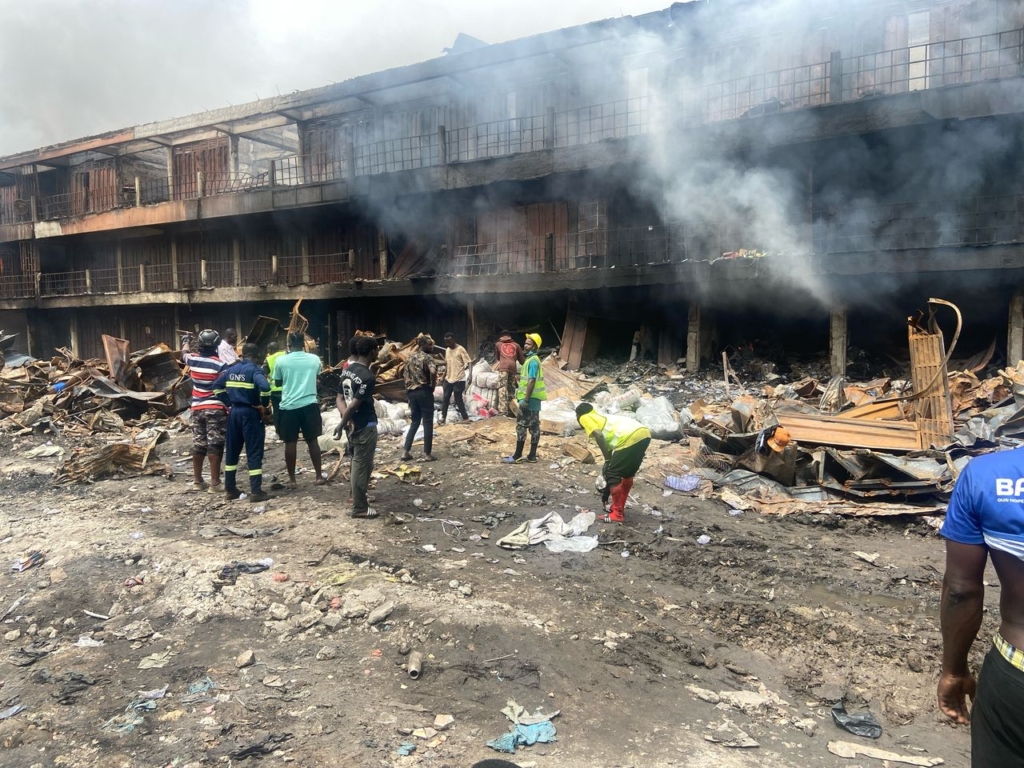
There, the Kejetia Boys, a creative collective known for rap cyphers, DJ sets, and a gritty fashion label, watched their store burn. Like Fatawu, they too had stitched a life out of the market, turning their shop into a studio, stage, and community center for young street creatives.
These were not isolated disasters. The cycle of recurring fire and failed responses repeats without answers.
Kantamanto and Adum are the beating hearts of Ghana’s informal economy, 30,000 and almost 3000 traders affected, respectively. These are places of constant motion, where goods are sold, resold, upcycled, or remade entirely.
Fattawu’s connection to Kantamanto started in 2018, just after senior high school. Growing up in Old Fadama, an informal settlement often branded a slum and nicknamed “Sodom and Gomorrah”, he watched Kantamanto’s discarded garments and other e-waste pile into a familiar dumpsite.
“Everything they threw away found its way in my backyard,” he recalls. With the earnings from his small thrift shop, he bought his first camera that same year. That investment marked the beginning of a long-form project on his community, christened Old Fadama Retold.
“I wanted to tell our story beyond the lagoon and dumpsite,” he says, “because nobody else was going to.”
This year, in the aftermath of the Kantamanto fire, donations poured in from across the political and social spectrum:
- President Mahama contributed 1 million Ghana Cedis.
- The minority caucus in parliament added 200,000 cedis.
- The former Vice President and opposition presidential candidate from the 2024 elections, Dr. Mahamudu Bawumia, also donated 200,000 cedis, along with 5,000 pieces of roofing sheets and a promise to install CCTV cameras.
- Former trade minister and independent presidential candidate in the 2024 elections, Alan Kyeremanten, donated 100,000 cedis.
- A former member of parliament and administrator of the district assembly common fund also offered 100,000 cedis.
- Nana Kwame Bediako, presidential candidate in the 2024 elections, also donated 50,000.
Other well-meaning Ghanaians followed suit:
- The Paramount Chief of the Kwahu Traditional Area gave 200,000 cedis
- Olympic sprinter Benjamin Azamati donated 10,000 cedis.
- Prophet Keyi Duah of Believers’ Worship Center contributed a staggering 2.2 million cedis to church members affected by the fire.
Building Something Unique
In Kumasi, the Kejetia Boys built something equally radical. Situated on the Adum rail tracks, their shop was a creative community hub for promising talents within and around the market.
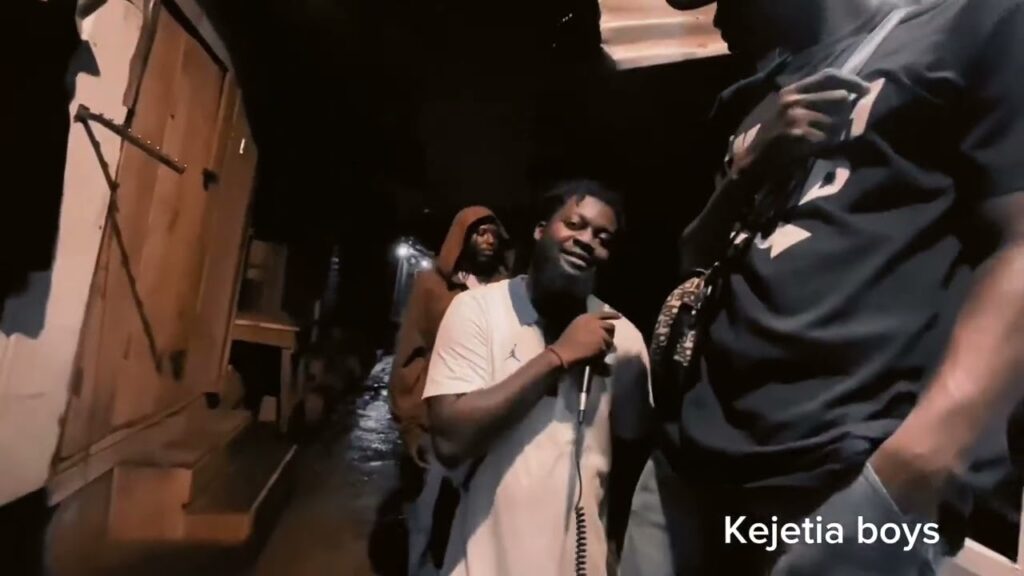
Tindan Omar Dok came to Adum Railways in 2011. Like many others, he started by selling clothes in the open, selecting pieces and reselling some at home, perching beside other vendors.
For years, he stayed mobile until 2019, when he and his cousin managed to open their first shop. That shop later became the foundation for something much bigger.
Kejetia Boys, a creative collective born out of a shared love for rap and style, and a determination to make space for talent within the market.
The group, all from working-class backgrounds, met while hustling between the Adum and Kejetia markets and began dreaming together.
What started as a vintage thrift store grew into a platform that pulled in DJs, beat producers, visual artists, and rappers. Many of them, young, searching, and without industry connections. Every Saturday after 4 p.m., their storefront became a stage for unmoderated open mic sessions, a space where anyone could show up and rap, free of charge.
Bars Open Mic drew young rappers from across the city. Some of those who passed through, like international rap star O’Kenneth, Gonaboy, and newer names like Sin District, are still connected to the collective.
Others have gone on to YouTube cyphers or studio sessions, supported by the Kejetia Boys’ growing network. They also ran a small music label, Rails Music Group, reinvesting profits from sales into studio time, events, and mentorship.
“Kejetia was where you went if you had nothing but a dream,” Dok explains. So they made space for each other.
Behind it all was Kadim Vintage Shop, the store at Adum Railways, that funded the mics, speakers, studio time, styling, film, and giveaways.. Even now, after everything, the ambition hasn’t faded.
Their GoFundMe brought in just $437, but they still talk about taking the open mic on the road, to other neighborhoods, and to other cities. What slows them is not energy or belief, but equipment.

“I Never Got Anything”
In the March fire, they lost everything: cash kept in the shop for daily purchasing, design archives, earlier fashion sketches, photographs of their early days, and the sound system that kept the sessions alive. Dok was alerted by one of the young rappers at 6:20 a.m. By the time he arrived, there was nothing to salvage.
Kejetia Boys have been through four market fires now, but this one was the worst. As in many cases, no direct support came to them.
Again, a few politicians: former Education Minister, minority caucus in parliament, former minister for food and agriculture, and a former vice president, made donations.
Some were rejected.
As it turned out, those donations went to the market leadership for rebuilding plans. These gestures, while generous, paper over a deeper issue. Millions are routinely raised for rebuilding, but almost nothing goes into regular maintenance or prevention.
Some say the fire was caused by faulty wiring, others suspect it was a deliberate attempt to clear space for investors.
The land belongs to the Ghana Railways Company, and speculation grew quickly after the fire. In response, the traders organized small protests. It was only after the traditional head of Kumasi, Asantehene intervened, his seat just a few minutes from the market, that the traders were assured they could return.
Dok credits the Asantehene for helping to hold the space and allowing rebuilding to begin. Still, the area remains largely empty.
For now, the collective is working out of a small space, and hope rests on being able to afford new speakers to restart the open mic sessions. They ended the last one with the title Ashes, a nod to what had been lost and what they still hoped to recover.
In the wake of the Kantamanto fire, many turned to the OR Foundation, an NGO that had long positioned itself as an ally to traders. Over the years, the OR Foundation has led a mix of creative, sometimes ambitious interventions.
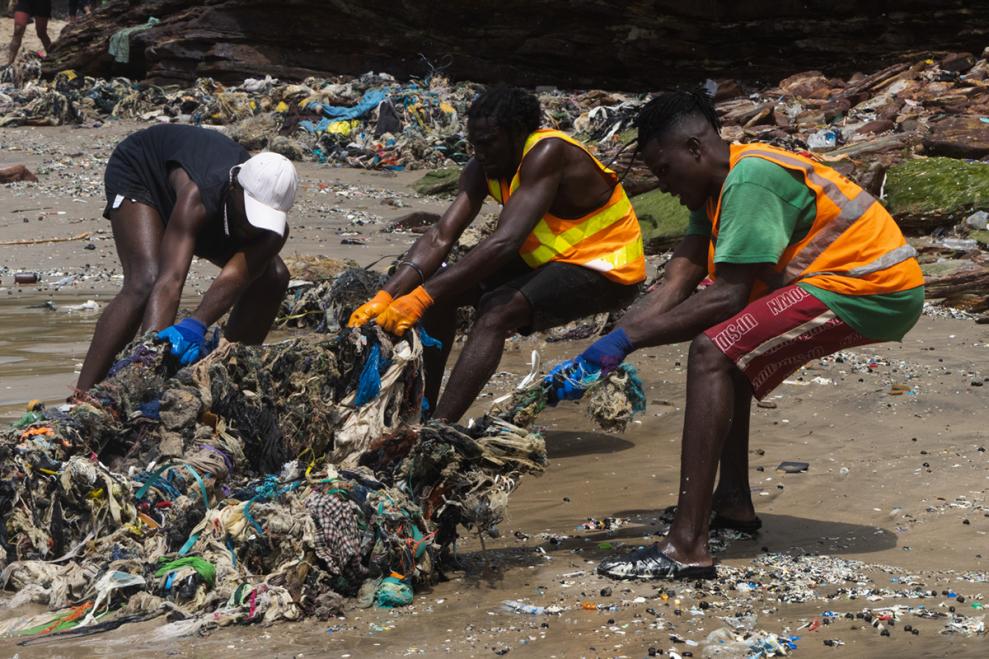
From weekly beach cleanups that employ dozens of people, to large-scale public awareness-centered events. They organize Obroni Wawu October, an annual festival held since 2022 to honor Kantamanto Market’s role in circular fashion: upcycled runway shows, pop-up thrift shops, and sewing contests.
In 2023, they also launched Agbetsi Living Water Swim, an initiative where athlete and board member Yvette Tetteh swam 450 kilometers of the Volta River, collecting water samples and connecting with riverine communities.
Alongside her were twelve storytellers following the route and documenting the everyday lives of people living near this vast water body.
Once seen as a powerful voice against fast fashion, the OR Foundation is now at the center of growing tensions.
In April 2025, the Ghana Used Clothing Dealers Association (GUCDA) held protests against what they claimed was “a calculated attempt by the OR Foundation to defame their trade and portray Ghana as a global dumping ground for textile waste.”
They accused the OR Foundation of making false publications to secure funding from the European Union for its own purposes. They demanded transparency in the figures and research findings of the OR, alluding to exaggerations and insisting that the NGO, co-founded by two white Americans, has no authority to speak on behalf of the market.
But other market groups publicly backed The OR Foundation, claiming the NGO had supported 9,000 people with cash aid. This is despite news reports where traders complained about only receiving GHC 125 each and calling on market leadership to evenly distribute the donations.
Fatawu, who once worked closely with the organization as a community manager, says he was told the figure was closer to GHC 2,500.
“I never got anything,” he says. “I reached out three times. One of the founders’ brothers donated to my GoFundMe, but the organization itself never responded.”
To him, the so-called welfare desk is just that—a desk.
Meanwhile, Shein, the ultra-fast fashion giant that the OR Foundation once criticized alone, gave the NGO $15 million to seemingly help it soften its image.
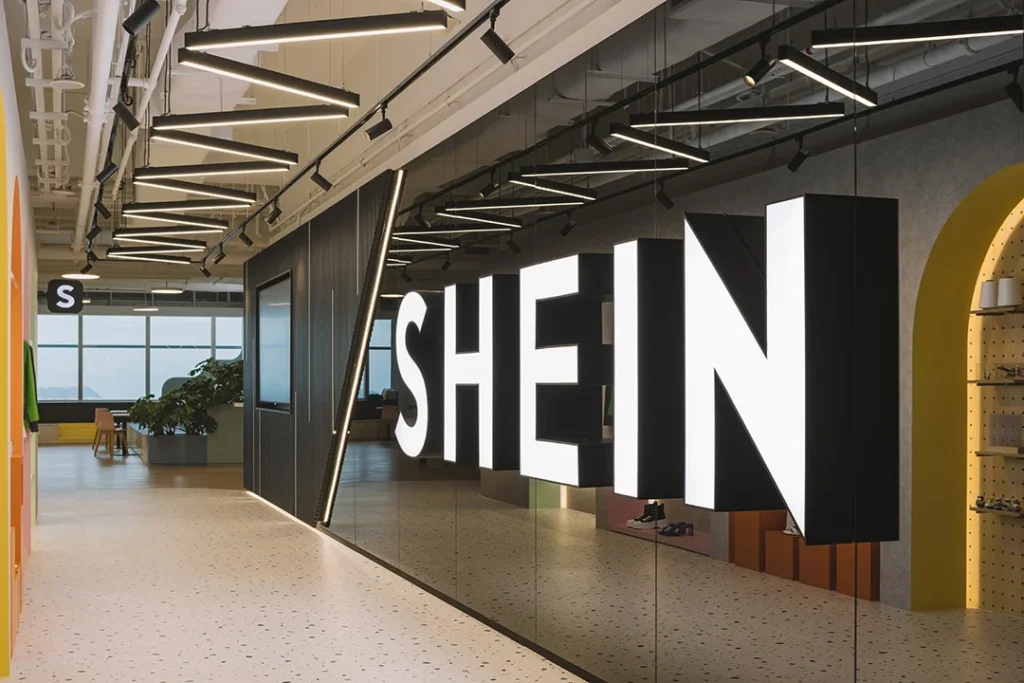
Yet the total money raised in Kantamanto’s name through viral documentaries, awards, grants, and what some regard as corporate guilt seems far greater than the actual relief brought to traders through their GHC 1 million donation, which the NGO says is part of a $1 million relief fund.
The questions of how much of this global goodwill is being translated into real support, and how much is being controlled, gatekept, or quietly absorbed, still ring true for most people as concerns of verification grow.
A trader speaking to Adomonline.com called on the Economic and Organised Crime Office (EOCO) to investigate the NGO and its claims.
Trying to Rebuild
What connects Fattawu and the Kejetia Boys is their role as witnesses. Both turned their environments into art. Both offered platforms to others. Yet when disaster struck, their vulnerability was laid bare. Fattawu’s GoFundMe campaign, though modest, received enough to replace some of his lost merchandise.
“It reminded me people were watching,” he says.
Less than a month before the fire, Kejetia Boys opened a second store on the Kwame Nkrumah University of Science and Technology campus in Kumasi. I was there for the launch, watching how they gathered young people across different creative subcultures: skaters, bikers, rappers, music producers, fashion kids, designers.
The energy was full, and it was clear how much intention went into every part of the space. That shop has now become a kind of lifeline. What Dok wants isn’t just another rebuild, but structure. He speaks about fire safety education, planned electrical systems, and regular checks — the basic things that could have made a difference.
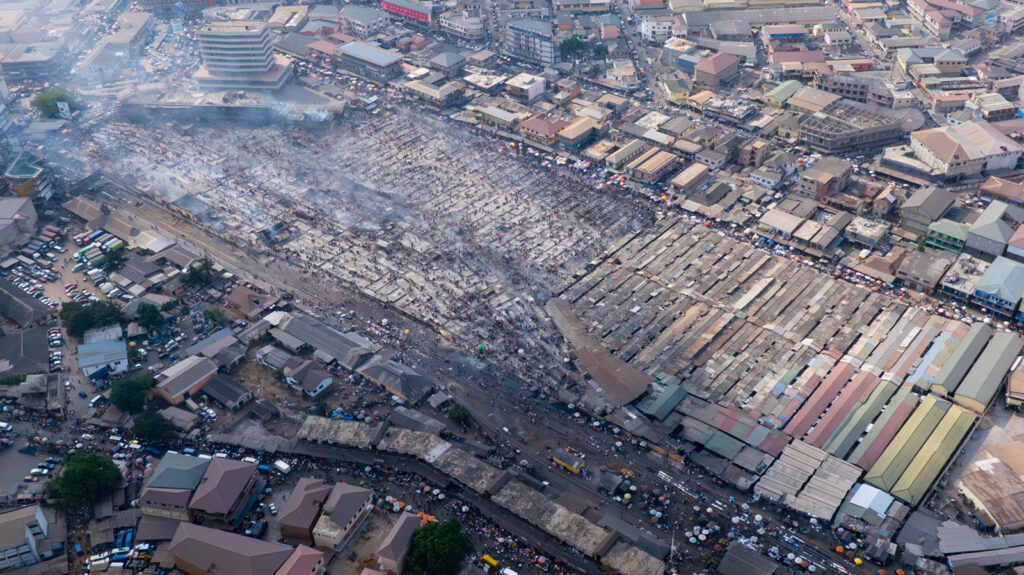
The real struggle is grappling with how much they have had to lose before anyone paid attention. But their stories are a reminder that cultural labor in Ghana is underprotected. The creatives who document life, offer refuge, and build scenes often do so without safety nets. As the memory-keepers of this moment, they deserve more than silence when the flames come.
This is not only about fire but disaster weaponized by politicians seeking relevance, chiefs seeking land, and NGOs seeking funding. It is about how informal economies are marked as messy until they become profitable.
In this cycle, the people who make our cities vibrant; the traders, creatives, and environmental activists, are always the most expendable. What they have built can be undone in minutes, and no one will publish the numbers or explain where the money went.
To break this cycle, we must name it.
We must ask where the money flows, who controls narratives, and why creatives like Fattawu and the Kejetia Boys are always left to rebuild alone.
If we are serious about justice—environmental, economic, cultural—we must do more than perform concern. We must listen, protect, and act before the next fire comes.





